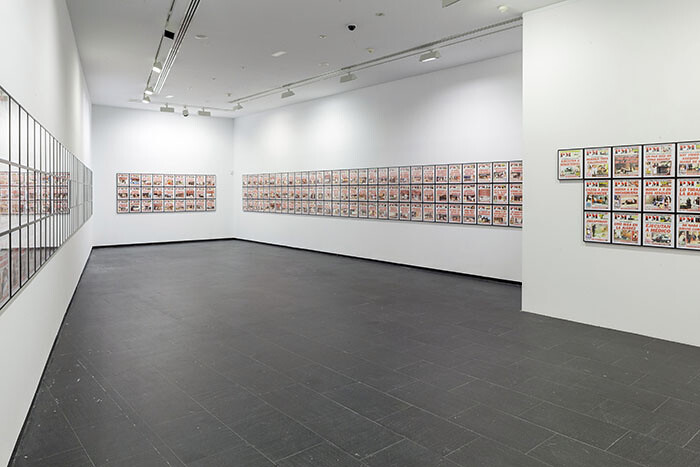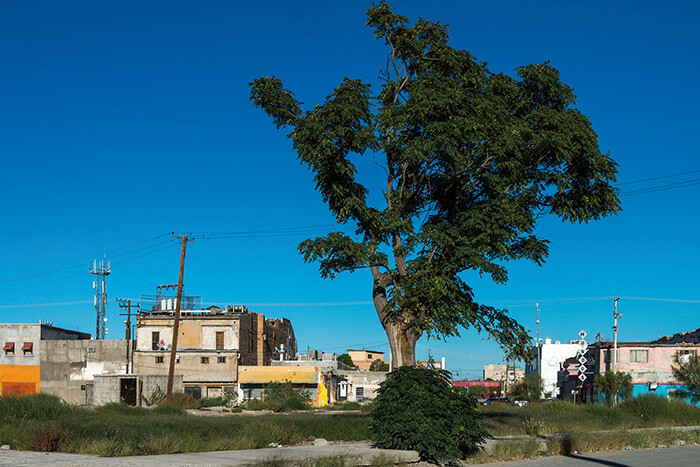The testimony of the witness still has an important place among many artists and writers who identify their works with activist politics, dissidence, the subaltern, and the liberation strategies particularly favored in the last decade of the twentieth century. However, in these times, in which human testimony has been displaced from prominence by so-called material evidence, and in which psychology has given way to forensics, our attention seems to be directed away from the subjective aspects of evidence: the ambiguities and anxiety with which trauma and memory inevitably perfuse the account of the victim. This displacement is already pervasive in the field of law as much as it is in politics, the social sciences, and the entertainment industry, as we have increasingly seen with the influence of DNA, 3D scanners, and satellite surveillance, or in the popularity of the crime novels of Patricia Cornwell and Kathy Reichs, or the CSI television series. The current exhibition of Mexican artist Teresa Margolles at the Centro de Arte Dos de Mayo (CA2M) in Madrid embraces this cultural shift in unexpected ways, without placing itself outside the frame of testimony.
Curated by María Inés Rodríguez, Margolles’s “El Testigo,” which means “the witness,” is one of the strongest exhibitions among the current art offerings in Spain this season, and is a remarkable demonstration of heightened political sensibility among today’s socially-engaged artists. Featuring photographs, video works, a sound piece, and an installation, this cohesive display unfolds in a circular arrangement of rooms, presenting us with examples of the aftermath of ten years of living with conflict, violence, and crime in the pathological borderland of Mexico’s Ciudad Juárez. Margolles’s exhibition methodically and meticulously collects, catalogs, and analyzes this enduring experience of devastation, loss, and displacement in images, sounds, and testimonies.
The exhibition opens by revealing the identity of El Testigo [The Witness] (2013), a photograph of a tree with traces of bullets and projectiles buried in its bark, which stands as a living testimony of the violent incidents and murders that have taken place in Ciudad Juárez. Thus, from its inception, Margolles wants to make clear that the exhibition blurs any distinction between objects and subjects, evidence and testimony. For Margolles, what the tree “tells” us as a “silent observer” qualifies as valid testimony, revealing the impermanence of lives and things in a specific place. It is the same kind of material evidence that she displays in the first room of the exhibition: 313 photos of the front pages of PM—one of the main tabloids in Ciudad Juárez that reported on some 3,075 murders—which Margolles compiled during 2010. The covers of PM 2010 (2012) set the corpses alongside the bodies of naked women and prostitution ads—a typical practice of this kind of paper—showing how sensationalist media confers the same value and space to either the dead body or the sexual body within the same specific reality.
From this display of the mounting evidence of a reality in crisis, we move on to the almost unbearably chilling experience of Sonidos de la muerte [Sounds of Death] (2008), a large, dark tunnel punctured only by the reproduction of sounds recorded at crime scenes, which leads us to Esta finca no será demolida [This Property Won’t Be Demolished] (2011), an important series of 30 color photographs that show the ruins of abandoned, burned, and destroyed houses, deserted by their owners and inhabitants, who were forced to migrate to safer places. The series, once again, underscores the point—not that objects and architecture may provide an objective alternative to human subjectivities, ambiguities, and anxieties, but, on the contrary— that these houses cannot obliterate or remove the traces and histories of the individual living subjects associated with them. Thus, even if these buildings provide us with an account of the economic, social, and political devastation of this city—where the drug wars and the ongoing economic crisis have compelled people to abandon their homes—there must always be someone who can decipher the evidentiary value of the objects, of these buildings, in a way that is necessarily subjective.
In the next room, Margolles aptly places a video projection, En torno a la pérdida [Around Loss] (2009–13), which gathers testimonies from different residents of Ciudad Juárez coming from different social backgrounds. They talk about their experience and their relationships with their homes; what their houses meant to them when they bought them, while they lived in them, and what it meant to lose or abandon them.
After understanding that “El Testigo” has tried to convey and restore the story of a ruin and its collateral damages and its objects and its subjects, we are certainly ready to face La promesa [The Promise] (2012), the centerpiece of the exhibition. This elongated sculpture is built using the remains of a demolished house, crushed and broken to pieces, that Margolles bought in Ciudad Juárez and exhibited for the first time in 2012 at Museo Universitario de Arte Contemporáneo (MUAC) in Mexico City, also under the curatorship of Rodríguez. At CA2M, this horizontal sculpture is subjected to further transformation as a group of volunteers scatter the rubble around the space daily, which was the same procedure followed at MUAC. Watching this process at CA2M, I discovered pieces of pottery, human hair, bits of paper, and other unexpected fragments in the rubble, which, I believe, stand as examples of the power of honest, unembellished, and uninflected images—raw images, which, like the rest of the works, are purposely placed around, and support, the call of La promesa.
Although this not an objective narrative, nor a judicial trial, the work is a personal testimony supported by the insight and determination of an artist and her incisive recollection and analysis. And it has the appearance of an indictment. Margolles strips away the literary affectations and theatrical pyrotechnics that blur direct engagement with reality. Only art allows her to face us with the certainty of sharing the pulse of life as it happened through death, and to plunge the viewer into the welter of events as they unfold again as in the past. La promesa is all that and more.
Whether Margolles is trying to create a counter-image to question the authority and legitimacy of official images, I am not sure. But one thing is clear: the displacement that La promesa itself required in traveling from Ciudad Juárez to MUAC/Mexico City, and then to CA2M/Madrid, attests to what Eyal Weizman asserts in the catalog of the exhibition: “The broken lives and broken structures of this town [Ciudad Juárez] are the product of forces that are as powerful as they are diffused and global in scale. Dealing with material fragments of a building, transporting them across borders and reassembling them remotely, in different forms, is not a call to read in these traces solely the influence of local actors. The microphysical details of what used to be a house become an entry point from which to reconstruct larger processes, events, and social relations, conjunctions of actors and practices, structures and technologies.”1 Even her En torno a la pérdida, which complements the documentation of La promesa, stands as testimony to a broken promise.
“El Testigo” is powerful because it seems to dwell in a zone of ambiguity that has become, over the years, a rather familiar place. In that zone, we are also witnesses. We, too, must face the corpse on our table.
Eyal Weizman, “When the Witnesses Can’t Speak, the Buildings Must…,” in El Testigo. Teresa Margolles (Madrid: CA2M – Centro de Arte Dos de Mayo, Comunidad de Madrid, 2014), 100.








